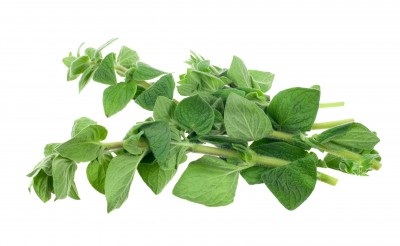Oregano - Origanum vulgare

Common Names: Oregano, Wild Marjoram, Pot Marjoram, Common Oregano, Origanum vulgare, European oregano, True oregano, Mountain joy, Winter marjoram, Turkish oregano, Latin: Origanum vulgare
Latin Name: Origanum vulgare L.
Origin: Asia, Europe, North America
Short Introduction
Oregano is cultivated as a culinary herb, medicinal plant, and even as an ornamental for rock gardens. It prefers sandy-loamy soil in a sheltered, sunny location. Sow seeds in early spring, from March to April. While young, it requires regular weeding. For optimal growth, a light application of lime-based fertilizer is recommended. Oregano is an undemanding, spreading herb that thrives with minimal care. To encourage bushy growth and fresh shoots, trim the plant back to about 7 cm after it blooms. Be mindful of possible insect stings—due to its high nectar content, oregano is irresistibly attractive to butterflies, bumblebees, and honeybees.
Detailed Description
Oregano invigorates the mind, disinfects, aids digestion, relieves spasms, and adds exquisite flavor to our dishes.
Botanical Information
Oregano (Origanum vulgare) is a perennial herb in the mint family (Lamiaceae), growing 20 to 90 cm tall. Its green leaves and often reddish stems are visually distinctive. In July and August, oregano produces clusters of small, violet-pink to sometimes white flowers. The aromatic essential oils released by the plant are responsible for its pleasant fragrance. Both the aerial parts and flowers are harvested in mid to late summer.
Origin and Distribution
Oregano originates from the Mediterranean and parts of Asia. Its name derives from the Greek words “oros” (mountain) and “ganos” (joy, delight, brightness), translating to “joy of the mountain.” This fitting name reflects how, in Greece, entire mountain slopes are covered in oregano, filling the air with its uplifting scent. From the Mediterranean, oregano has spread across Europe, western and southwestern Asia, and has even been introduced to North America.
Usage / Dosage
The aerial parts of oregano are widely known as an excellent culinary spice, especially for Italian dishes such as pizza, and as a key ingredient in herbes de Provence blends. Beyond the kitchen, oregano is a cherished herb in traditional medicine and home remedies, valued for a broad spectrum of uses. It is renowned for its ability to stimulate bile flow and is a time-honored remedy for digestive and liver complaints, as well as supporting appetite and digestion. Oregano’s anti-inflammatory and antiseptic properties make it a traditional treatment in gargles for mouth and throat inflammations, while chewing its leaves has long been a folk solution for toothaches. Its antiseptic effects are also employed externally for washings and compresses to address fungal infections, skin ailments, or insect bites. Oregano exhibits disinfectant qualities and helps promote expectoration, making it highly regarded for soothing irritable coughs. Its ability to relax smooth muscle spasms has elevated oregano among the most popular natural spasmolytics, relieving cramps associated with menstruation and even epilepsy.
True to its Slavic name, which means “good mood,” oregano is believed to support both body and spirit—it is considered a gentle antidepressant, soothing nerves, balancing sleep, and uplifting mood. In the Middle Ages, oregano was thought to ward off evil spirits. Common traditions included planting oregano on graves for peaceful rest, weaving it into bridal wreaths for luck, and using it to ease sorrow and maintain peace of mind.
Active Compounds
Oregano is rich in essential oils, tannins, bitters, tannin gum resin, volatile oil, and other substances. Its main active compounds, thymol and carvacrol, are among nature’s strongest antiseptics. These essential oils were used in ancient Egypt for mummification as powerful preservatives. Today, they are still utilized in bookbinding to combat mold, as a powder for skin infections, and as antiseptic agents in mouthwashes.
Traditional Dosage
Oregano tea: Pour 0.25 L of boiling water over 2 teaspoons of dried herb and let steep for 15 minutes. Drink freshly prepared tea 1–2 times a day, preferably before meals if used for digestive issues. It can also be used as a gargle for oral inflammation or sore tonsils.
For inhalation: Add 2 tablespoons of oregano to boiling water, cover your head with a towel, and inhale the steam for 10–15 minutes.
Warning: No adverse effects are known, and oregano may be used safely for long-term use.
